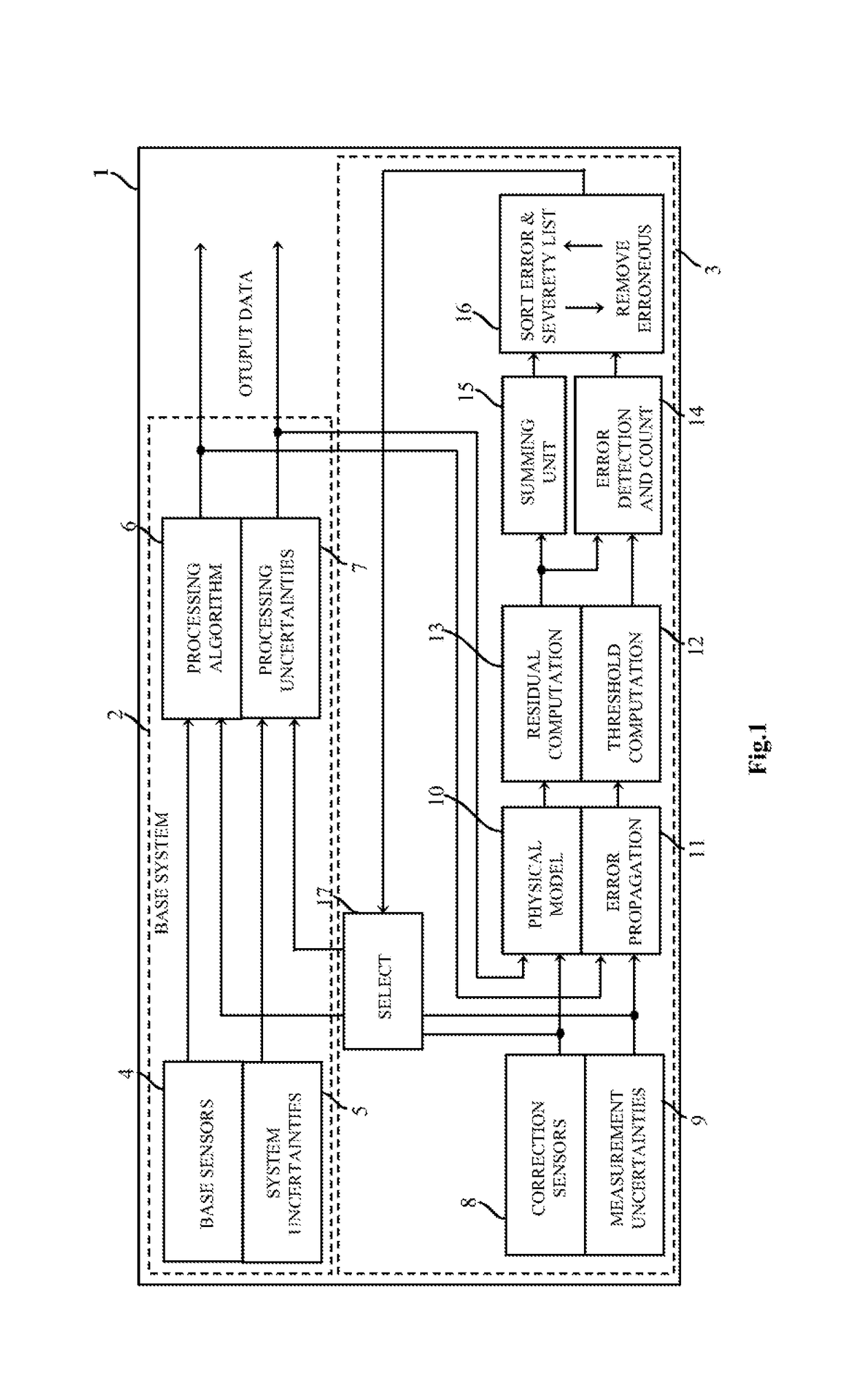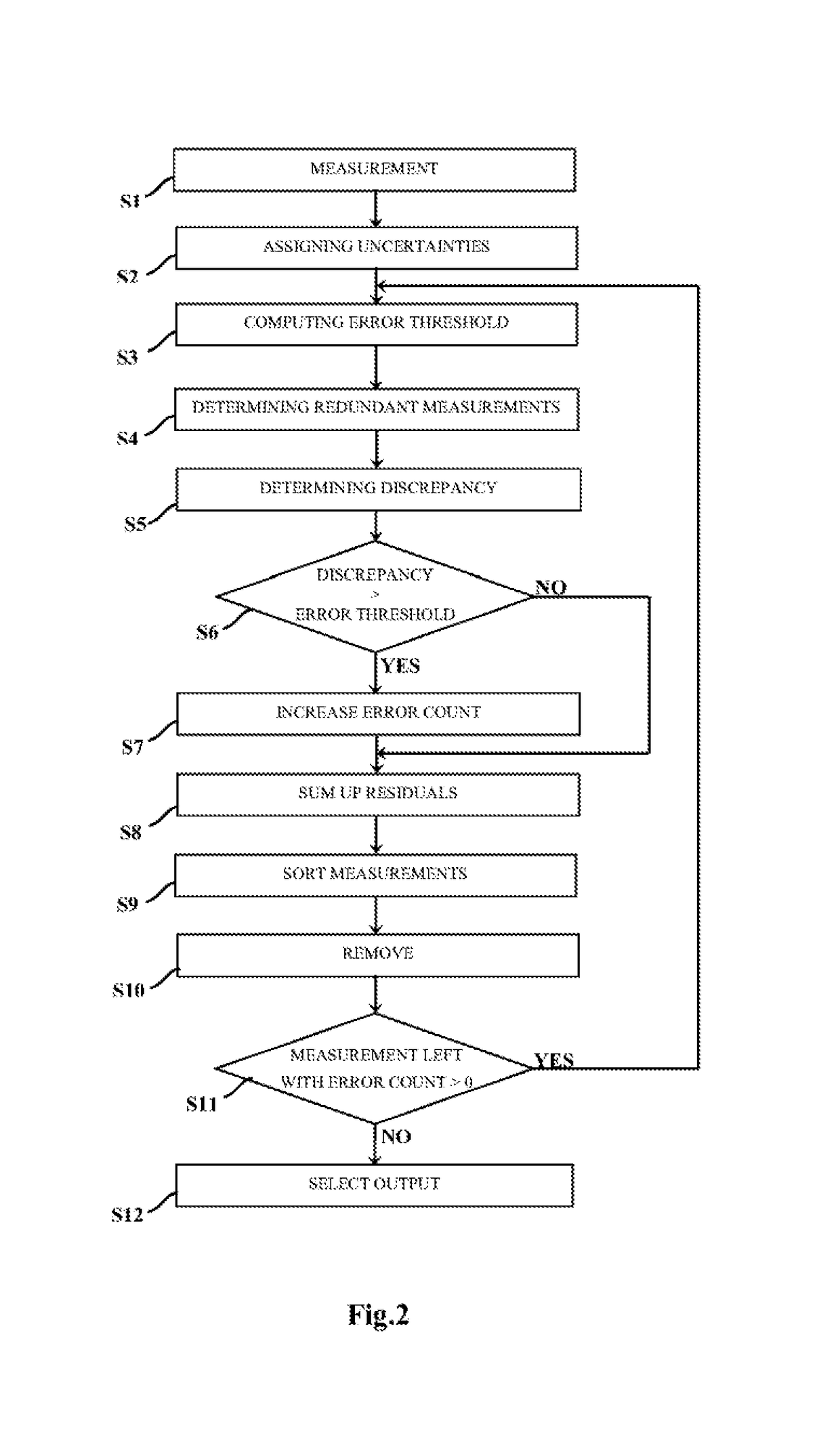Navigation system and method for error correction
a navigation system and error correction technology, applied in the field of error correction, can solve the problems of inability to apply in any situation, inability to find additional measurements at certain points in time, and inconvenient selection of measurement methods, etc., to achieve the effect of improving the selection of measurement used
- Summary
- Abstract
- Description
- Claims
- Application Information
AI Technical Summary
Benefits of technology
Problems solved by technology
Method used
Image
Examples
Embodiment Construction
[0023]In FIG. 1 a block diagram is shown which illustrates the main functional blocks of a navigation system 1 which is exemplary for an embodiment of the present invention. The entire navigation system 1 consists of a base system 2 and a correction system 3. The base system 2 comprises base sensors 4 such as three dimensional accelerometers and gyroscopes that measure three dimensional accelerations and angular rates. As indicated with reference numeral 5 base system sensor uncertainties are associated with each of the base sensors 4. Such uncertainties may advantageously be variances and co-variances.
[0024]The raw data that is output by the base sensors 4 is supplied to a processing algorithm unit 6, for example a strapdown algorithm. By the strapdown algorithm and from the base sensor data output data is calculated that comprises for example values for velocity, position and pose. As indicated by the processing uncertainties 7 in addition to the base system sensor uncertainties t...
PUM
 Login to View More
Login to View More Abstract
Description
Claims
Application Information
 Login to View More
Login to View More - R&D
- Intellectual Property
- Life Sciences
- Materials
- Tech Scout
- Unparalleled Data Quality
- Higher Quality Content
- 60% Fewer Hallucinations
Browse by: Latest US Patents, China's latest patents, Technical Efficacy Thesaurus, Application Domain, Technology Topic, Popular Technical Reports.
© 2025 PatSnap. All rights reserved.Legal|Privacy policy|Modern Slavery Act Transparency Statement|Sitemap|About US| Contact US: help@patsnap.com


